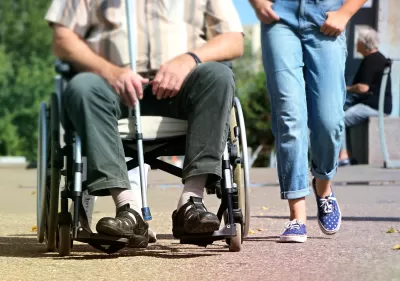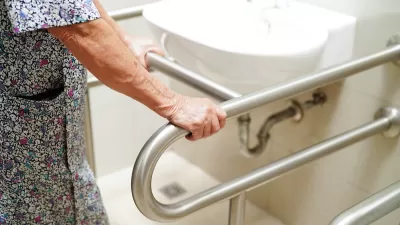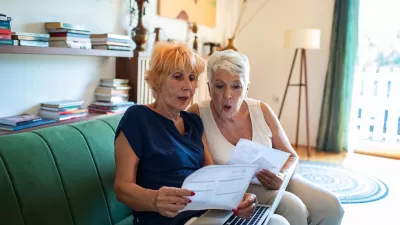A new report highlights inequalities in accessibility and affordability.

Jennifer Molinsky and Whitney Airgood-Obrycki highlight important findings from a recent report from Harvard University's Joint Center for Housing Studies and AARP's Public Policy Institute investigating the role of housing in creating livable neighborhoods. "AARP’s Livability Index is an online resource that provides livability scores for neighborhoods across the US by measuring seven key areas: housing, neighborhood features, transportation, environment, health, engagement, and opportunity."
The report shows that "the places with the highest overall livability scores offer the greatest array of housing options. As one moves up the livability spectrum, the share of multifamily units increases, as does the share of apartments in larger buildings." However, one important finding affirmed the fact that those with higher incomes have access to more livable neighborhoods, as median rents and housing costs are positively correlated with livability. "Improving housing affordability in the most livable communities is critical to ensuring these places are truly open to people of all incomes. While neighborhoods that score highest on the livability spectrum tend to have the most housing types, expanding access to these locations means expanding income-restricted options."
According to the report, older adults are more likely to face cost burdens, making it crucial for government programs to support aging in place and affordable, accessible housing for seniors. "Across all levels of livability, there is need for more accessible housing to meet the needs of the growing number of older adults with mobility difficulties."
FULL STORY: Housing and Livable Neighborhoods

Planetizen Federal Action Tracker
A weekly monitor of how Trump’s orders and actions are impacting planners and planning in America.

Congressman Proposes Bill to Rename DC Metro “Trump Train”
The Make Autorail Great Again Act would withhold federal funding to the system until the Washington Metropolitan Area Transit Authority (WMATA), rebrands as the Washington Metropolitan Authority for Greater Access (WMAGA).

The Simple Legislative Tool Transforming Vacant Downtowns
In California, Michigan and Georgia, an easy win is bringing dollars — and delight — back to city centers.

The States Losing Rural Delivery Rooms at an Alarming Pace
In some states, as few as 9% of rural hospitals still deliver babies. As a result, rising pre-term births, no adequate pre-term care and "harrowing" close calls are a growing reality.

The Small South Asian Republic Going all in on EVs
Thanks to one simple policy change less than five years ago, 65% of new cars in this Himalayan country are now electric.

DC Backpedals on Bike Lane Protection, Swaps Barriers for Paint
Citing aesthetic concerns, the city is removing the concrete barriers and flexposts that once separated Arizona Avenue cyclists from motor vehicles.
Urban Design for Planners 1: Software Tools
This six-course series explores essential urban design concepts using open source software and equips planners with the tools they need to participate fully in the urban design process.
Planning for Universal Design
Learn the tools for implementing Universal Design in planning regulations.
Smith Gee Studio
City of Charlotte
City of Camden Redevelopment Agency
City of Astoria
Transportation Research & Education Center (TREC) at Portland State University
US High Speed Rail Association
City of Camden Redevelopment Agency
Municipality of Princeton (NJ)





























